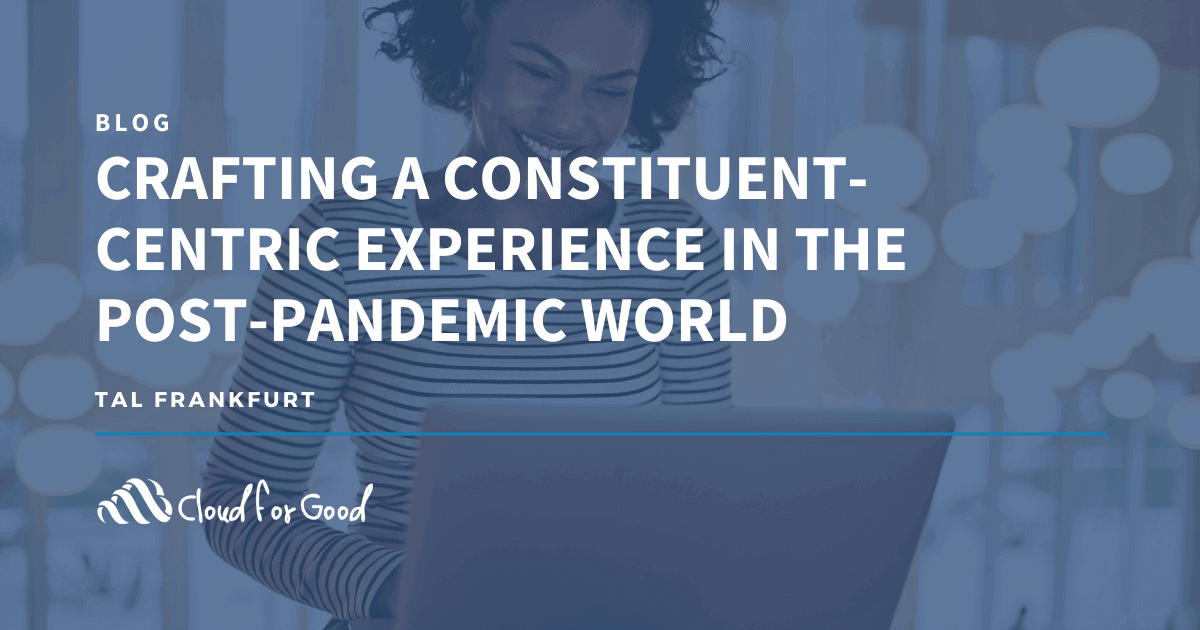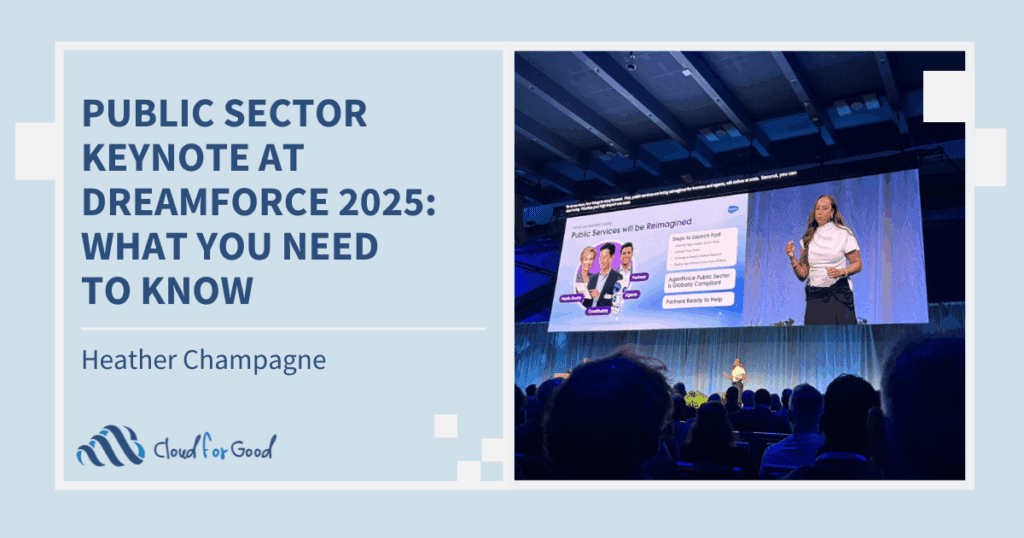NOTE: This blog was originally posted on Forbes. Read it here.
There’s no denying the profound impact COVID-19 has had on our society. Strategies and methodologies inherent to handling constituent experience across the nonprofit, higher education, and for-profit spaces have been dramatically altered, but not all sectors have been affected in the same way. Some human services nonprofit organizations, such as food banks and homeless shelters, are witnessing a dramatic increase in demand for their services, while others are facing supply chain disruption.
We cannot generalize and say that everyone is dealing with the same type of crisis, even though these individual crises are born from the same public health event, but we can discuss the various stages of the crisis in an effort to find a suitable path forward. In order to positively transform the effects of COVID-19, our processes and strategies must evolve and become more translatable to the virtual environment. The future of our global economy will be greatly affected by our response to three scaling stages of crisis management:
Stage 1: Containing The Crisis Now
In order to contain the crisis, organizations are focused on maintaining continuity and managing processes. This comes as a direct response to the compromised nature of the society we’re all experiencing and serves as a preventative measure to help contain both the spread of the virus and its negative economic effects. Constituent and employee experiences have drastically changed, with the management of expectations and processes evolving by the day as new public safety information is provided and new precautions are enacted.
Stage 2: Adjusting To The New Normal
The second phase is about the preparation for, and adjustment to, the new normal. This new reality has forced the acceleration of many trends associated with virtual engagement, such as remote learning, telehealth, and virtual home visits. Progressions and advancements that we expected to happen eventually (we’ve been talking about remote learning for decades) are happening now and being accepted at a much faster rate than previously expected. Remaining transparent in the viability of these technology integrations, prioritizing digital engagement, and promoting a sense of connectivity for consumers and constituents will all be key facets of survival for organizations across any sector.
Stage 3: Building Toward The Future Normal
In this phase, organizations will focus on positioning themselves to create value for the long term and establish the capabilities that will support their growth over time. Our world is changing more and more with each passing day, and the pandemic has illustrated just how important adaptability to change will be for the future of our global economy. In order to achieve that growth and instill resiliency, organizations will need to focus on three key strategies.
1. Constituent Experience: During the first stage of the crisis, organizations dealt with ways to contain the crisis, mainly dealing with operational issues that had to be addressed urgently as an initial response to the pandemic’s emergence. Organizations needed to focus on the health of their employees and clients first. Many organizations struggled to deliver the right communication or precision that was expected by their stakeholders. As the crisis evolved, the message needed to change rapidly, and, in many cases, organizations didn’t have access to the right data required to deliver that message.
Power has shifted monumentally to the consumer in recent years. Donors, students, and volunteers have many options to choose from, and they are intimately aware of how important their sought-after attention is to the various parties vying for that attention. Organizations will need to develop marketing and communication agility to compete in the future normal.
One of my company’s clients adapted its messaging for donors rapidly and was able to deploy multichannel campaigns in early April to support children and families when they needed that support the most. Another client is leveraging global influence to inform their rapid response to the evolving crisis around the world. Through immediate action taken by its directors, the organization is keeping information flowing freely through digital campaigns that enable educated decisions on the matter of public safety.
2. Driving Growth: Many nonprofit organizations were forced to cancel their conferences and events as a result of the pandemic. The proactive seamlessly adapted their strategies and networking events to utilize digital channels and maintain their goals despite the shift. The Pancreatic Cancer Action Network, for example, holds many PurpleStride Walk events to raise funds and awareness in the fight against pancreatic cancer. When it became clear that COVID-19 would impact those walks, the organization pivoted quickly and organized virtual walks as a way to continue their community activism.
The St. Baldrick’s Foundation shifted its shaving events to the virtual realm and expanded its overall support in the process. Detailed instructions were provided on how to create personal fundraisers and customize participant experiences to promote wellness and preserve a sense of community. This ability to remain malleable in the face of adversity, and maintain fundraising responsibilities, will separate the progressive organizations from the rest, ensuring their efforts during the pandemic will be remembered by current and future donors.
3. Last-Mile Delivery: Some products and services simply cannot be fully digitized; food still needs to get to humans, for example. Even still, we’ve seen a number of nonprofit organizations innovate their last-mile delivery practices as a result of the pandemic and provide services previously only available in-person. One of our clients recently partnering with eVisit to offer telehealth services and provide remote support for children and adults with disabilities.
No matter the sector or industry, there are valuable lessons to be learned during this time for those willing to consider alternative solutions. These lessons have the potential to save lives, affect customer growth strategies, and benefit our global economy in the short and long term. Now is the time to turn that potential into reality.





